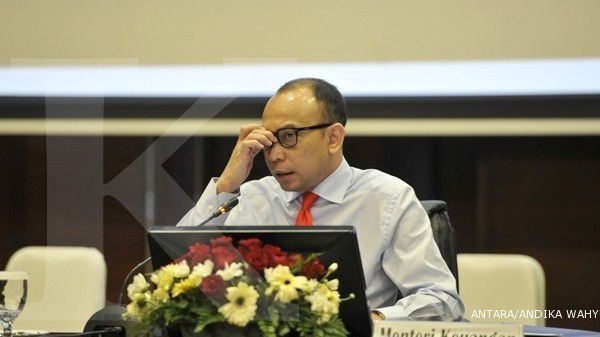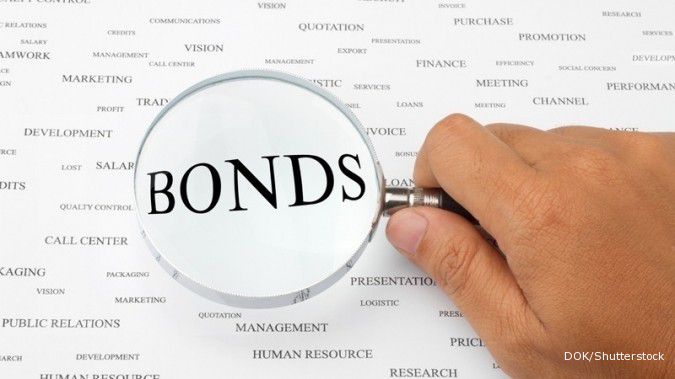JAKARTA. Indonesia’s fiscal and monetary authorities have confirmed they are now drafting regulations that aim to put the brakes on the country’s alarmingly rapid growth of external leverage.
For the fiscal authority, there has been a year-long “concern” on the growth of Indonesia’s debts both in the government and the private sector, Finance Minister Chatib Basri said.
Chatib said that the government would draft a standard operating procedure for state-owned enterprises (SOEs) wishing to borrow US dollars for their operations. In such cases, plans from any SOE wanting to tap overseas funds would be discussed thoroughly at the Office of the Coordinating Economic Minister before being granted approval.
“Which SOE could get foreign funding would depend on the approval discussed at the Office of the Coordinating Economic Minister,” he said recently.
“For instance, if we notice that an SOE already has too much foreign debt that could potentially spell trouble, then it ought to hold back [from borrowing dollars],” Chatib added.
Indonesia’s debt-to-service ratio (DSR), an indicator of total foreign debts compared to export earnings, stood at 46.3 percent in the first quarter of this year, according to the latest foreign debt statistics published by Bank Indonesia (BI).
This means that, of all total dollar-denominated income that the country gets from export proceeds, around half would be used to pay foreign debts.
For comparison, the present level of DSR has already doubled since President Susilo Bambang Yudhoyono began his second term in 2009, when the ratio stood at a mere 21.1 percent.
The government and BI are currently conducting a joint study on the possible implementation of a debt-to-equity ratio (DER) regulation, which would oblige private sector organizations to achieve a certain safe level of the ratio if they want to borrow dollars, according to Deputy Finance Minister Bambang Brodjonegoro.
To ensure that the regulation would not hamper local firms’ growth, it would have different DER thresholds for certain industries, given the fact that some business segments may need heavier leverage than others, Bambang explained.
Indonesia’s external leverage has been on the upward trajectory in recent years as local companies, taking advantage of the low interest-rate environment globally, have begun to tap overseas markets for dollars to finance their robust business expansion.
However, the rising foreign leverage poses the risk of liquidity mismatch, which could have a systemic impact on the economy. The financial calamity that occurred in Indonesia in 1997-1998 was triggered by the bankruptcy of many local private firms unable to pay their dollar-denominated debts, after the rupiah weakened significantly — to as high as 16,000 per dollar at the time.
Rating agency Standard & Poor’s (S&P) specifically warned Indonesia over its rising external leverage, citing such an economic risk as the major reason behind its refusal to grant the country an investment grade status. In April, S&P warned that the external indebtedness of Indonesia’s private sector was already “much larger” than other countries with a similar credit rating to Indonesia.
Last week, BI released statistics noting that Indonesia’s total debts increased 9.7 percent year-on-year to touch US$283.7 billion as of May. The debt level — 60 percent of which came from the private sector — might warrant “continuous vigilance” from policymakers, BI cautioned. (Satria Sambijantoro)
Debt rules prepared as RI leverage soars
July 21, 2014, 10.07 AM
/2014/07/14/375903391p.jpg)
ILUSTRASI. Jeruk nipis
Source: The Jakarta Post
| Editor: Hendra Gunawan
Latest News
-
December 12, 2025, 11.18 AM
Indonesia Expects to Complete Tariff Negotiations with U.S. by Year End
-
December 11, 2025, 10.02 AM
GLOBAL MARKETS: Oracle Knocks Stocks as Fed's Message Weighs on Dollar
-
December 11, 2025, 09.27 AM
The Fed Cuts Benchmark Interest Rate by 25 Basis Points, High Economic Risk
-
December 11, 2025, 03.50 AM
Federal Reserve Issues FOMC Statement December 10, 2025 (2:00 p.m. EST)
-
December 10, 2025, 11.42 AM
US Trade Deal with Indonesia at Risk of Collapse, US Official Says
-
December 10, 2025, 09.47 AM
GLOBAL MARKETS-Asia Shares Ease as Fed Cut Priced, Guidance Uncertain
-
December 09, 2025, 09.34 PM
Italy's Eni Discovers Major Gas Reserves Off Borneo in Indonesia
-
December 09, 2025, 01.00 PM
Asian Stocks Slip, Currencies Steady as Markets Await Fed Cut and 2026 Outlook
-
December 09, 2025, 09.24 AM
Asian Stocks Slip as Nervy Markets Wait for Fed












